The top 5 MUST KNOW cocktails
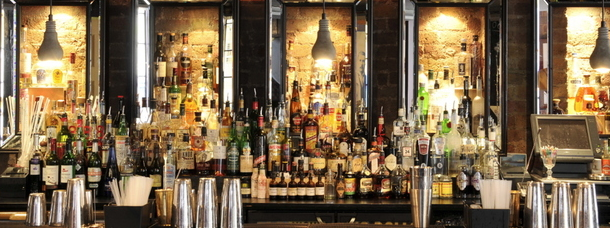
I became a barman mainly because I was baffled when I walked in to bars in Sydney and in London and had NO IDEA what to order- or what all the other customers were ordering. I would just ask for a beer. I often wonder how people find out all about the potential that exists behind a well-stocked bar- in fact, I wonder whether there are millions of grown ups the world over still just asking for a beer, because the don’t know the basics.
So this post is a back to basics- the most well-known cocktails and what they taste like, and what they might say about the person drinking them!
Bellini- This is a Venetian classic aperitif drink- white peach puree mixed with prosecco. Fresh and peachy but not too sweet. It is hard not to like it. This is seen as a girl’s drink, but it is damn delicious, so well worth a sip.
Old Fashioned- Unlike other popular cocktails with fizz and lots of fruits, this is a simple bourbon whiskey-based cocktail with bitters, sugar and orange peel and it actually tastes of alcohol! But very drinkable.Thought of as a man’s drink, but this is my wife’s favourite cocktail- and she isn’t keen on bourbon. A must try- equally good in Summer or Winter
Mojito (pronounced mo-hi-to)- Probably one of the most popular cocktails in the world at the moment. Fresh, mint and lime flavoured rum based drink. As well as mint flavour, sweetness and sourness should both be present and noticeable, though the exact balance is highly subjective.
Absolutely everyone loves this drink, especially on a sunny day!
Negroni- This is a very cool aperitif, if you are looking to impress your new partner. It implies that you know something about cocktails. The key to this bitter, sweet drink is the balance. The perfect Negroni consists of equal parts of all ingredients with the slight dilution of water and a zest of orange.
Cosmopolitan- There are a lot of different recipes for this contemporary classic cocktail but there are only a few recipes that actually balance this drink well. Usually thought of as a girls’ drink- became famous in Sex & the City. This is the best recipe I know:-
35ml Citrus vodka
15ml Triple sec / Cointreau
10ml Freshly squeezed lime juice
25ml Cranberry juice
2 dashes Orange bitters
1 dash Lime cordial
Garnish: Flamed orange twist
Glass: Martini
Method: Shake all ingredients with ice cubes and fine strain into chilled glass.
For garnish, gently hold the orange zest and heat it for a few seconds then squeeze it.
Kampai !
R
Valentine Cocktails 2014

It is that time of year again- Christmas, then New Year (which is a big deal for us Japanese), my wife’s birthday and then Valentine’s, White Day (which I believe I recounted the joys in last year’s Valentine blog ) and then Easter. Endless presents!
I don’t think I am a very romantic man, much to the dismay of my wife, but this year I am going to make a little more effort and I am going to cook her a special meal and make her a couple of delicious chocolate cocktails. Mixology, just like all the arts (I’m thinking of wine-making, cookery, fine art, whisky) and can take itself a little too seriously at times and I know I am not immune from that; Valentines seems the perfect time to just have a little fun with it all and make something that everyone will enjoy- including the children if I leave out the alcohol.
So here are a couple of well loved recipes which will put a smile on your loved one’s face. And when I say loved ones, don’t forget all those mums, dads, Grandmas and Grandpas, good friends and kind neighbours, old or young- they will all enjoy sharing the love.
Hot St. Valentine
150ml hot milk
4 teaspoons of unsweetened cocoa powder
3 teaspoons of brown sugar
20ml dark rum
10ml amaretto
A pinch of salt
Whipped cream
Method:
1. Warm hot milk in a pan over a medium heat and stir in the cocoa powder
2. Continue to heat until the mixture is hot, but not boiling, then add the sugar and the salt.
3. Stop the heat and add the rum and amaretto
4. Pour into a cup and add some whipped cream and grate chocolate over the drink.
Milvian Martini
40ml gold tequila
20ml dark chocolate liqueur
15ml agave syrup
20ml milk
3 mint leaves
1 bar spoon of unsweetened cocoa powder
A dash of coffee bitters
Method: Shake ingredients with cubed ice and double strain into chilled martini glass.
Glass: Martini
Garnish: Cocoa powder
Happy Valentine!
R
Stocking Fillers

This is the time of year when you are thinking what to buy your nearest and dearest. It can be pretty tough to come up with an exciting present for the person who has everything. Whisky, wine and champagne are traditional choices, but Kampai have a few ideas for some extra special gifts- you can either wrap it up or make it for them when they come to visit.
Poppy Cordial from the East India Company
I have been fortunate enough to work with this one of the best tea companies in the country http://www.eicfinefoods.com and I came across this cordial when I was trying their quality products. My first thought was what does a poppy taste like? I have never tried poppy- I have only tried poppy seeds on bread. The flavour of this cordial surprised me and this would be a great Christmas present for anyone who appreciates quality- for mixing with cocktails or just mix with sparkling or tonic water. You can get this from the East India Company shop in Conduit Street- just off Regent Street in London, Bluewater in Kent or online.
Martini Gran Rosso from Martini
This would be a special present for a person who knows their alcohols. This limited edition Martini vermouth has been especially crafted to celebrate Martini's 150th anniversary http://www.martini.com/ . The 'luxury' vermouth is produced using red Barbera and white Trebbiano wines and carefully aged extracts.
It has complex herbal notes with some soft sweetness and can be enjoyed with just a couple of ice cubes or will give new excitement to some of the vintage cocktails.
Incorporating delicious Yule log- evoking flavours and original recipes here are Kampai's recommendations for Christmas:
Kampai Egg Nog
25ml Grand Marnier
25ml Tawny Port
50ml Fresh Milk
1 teaspoon of sugar
A whole raw egg
A sprinkle of All Spice
To be perfectly honest with you, I had never tried or made Egg Nog until the other day despite my 13 year bartending career. But it was well worth the wait: it was very very good. This drink is a traditional Christmas beverage, but I wonder how many people have actually tried this softly sweet and creamy cocktail.
Have a great Christmas everyone!
R
The Sake Edition
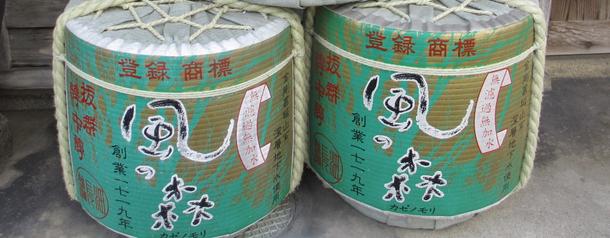
Here is the long promised blog all about sake. Since I am Japanese, people have always assumed that I know about sake- but I didn’t, not until enough people had asked me, anyway! I have been lucky enough to have worked with some very knowledgeable sake sommeliers and I have attempted to absorb some of what they have said. Thanks to them, I won a Sake cocktail competition this summer http://barmagazine.co.uk/taste-japan-finds-sake-shake-up-champion/ and I have taught classes on sake- I hope I can give you a good knowledge of the basics of sake here: this is for sake lovers only- I am covering all the basics and hope it will be used as a reference, but I shall post again with more relaxed coverage of sake- and other alcohols too of course.
There are considered to be 5 main types of sake with a couple of other types which are difficult to categorise.
1) Futsu-shu
This means “normal” shu (shu means alcohol). So this would be your table sake, something you can drink everyday or possibly only suitable for use in cooking, depending on the taste. May be served warm. The grade of sake depends on how polished the rice is that has been used to make it- the higher the polish, the higher the grade.
2) Honjozo-shu
This grade is often dry with at least 30% of the rice polished to remove the bran. Distilled alcohol is added and this sake is fermented for 18-21 days.
The distilled alcohol makes this sake lighter and smoother than other sakes and is a good sake to drink warm.
3) Junmai-shu
High to very high quality sake which is often dry, “junmai” means “pure rice wine”. At least 30% of the rice has been polished and no distilled alcohol is added. Again, this is fermented 18-21 days.
Junami-shu has a fuller, richer body and higher than normal acidity. The nose is not as pronounced as other types of sake.
4) Ginjo-shu
With atleast 40% of the rice polished and a cold fermentation of 30-36 days, this sake is of very high quality and often dry. If the bottle is labelled “Junmai-Ginjo” then no distilled alcohol has been added and if it is simply labelled “Ginjo” then it does contain distilled alcohol.
The flavour of Ginjo-shu is more delicate than all the previously mentioned sakes. A higher proportion of the rice has been polished, a special yeast is used during the long cold fermentation and labour-intensive techniques produce a more aromatic and complex range of sakes.
5) Daiginjo-shu
A very high quality superior grade sake, often dry which contains 50% polished rice. Daiginjo-shu is in reality an extention of the Ginjo-shu category (“Dai” meaning “big”) and follows the same patterns- “Junmai Daiginjo” means no distilled alcohol has been added etc.
-Sakes outside the categories-
Nama-zake
Namazake is unpasteurised and should be stored in a fridge to retain the quality and flavour. It has a lively, fresh flavour.
Nigori-zake
This is a cloudy sake that is only roughly filtered after brewing. Tiny bits of rice remain in the sake giving it a milky appearance. Be sure to shake nigorizake before you pour.
There are 5 elements involved in making sake -- water, rice, technical skill, yeast, and land/weather.
Rice- The rice used for brewing sake is called shuzo kotekimai (sake rice). The grain is larger, stronger, and contains less protein and lipid than the ordinary rice. The rice has a starch component called shinpaku in the center of the grains. The rice is polished to remove the bran as the proportion of polished rice affects the taste. There are at least 80 types of sake rice in Japan these include Yamadanishiki, Gohyakumangoku, Miyamanishiki and Omachi rice are very popular.
Water- Water is one of the important ingredients for making sake. It is involved in almost every major process of sake brewing from washing the rice to dilution of the final product before bottling- water comprises as much as 80% of the final product
-Sake Production-
1. Milling rice- The rice is first polished to remove the protein and oils, the bran, from the exterior of the rice grains, leaving behind starch. The amount of milling greatly influences the taste.
2. Washing and soaking rice- Newly polished rice is allowed to "rest" until it has absorbed enough moisture from the air so that it will not crack when dipped in water. After the resting period the white powder (called nuka) left on the rice is washed away and then steeped in water.
3. Steaming rice- Next the rice is steamed. The degree of cooking must be carefully controlled; overcooked rice will ferment too quickly for flavours to develop well and undercooked rice will only ferment on the outside. Generally, a batch of steamed rice is divided up, with some going to have koji mould sprinkled over it, and some going directly to the fermentation vat.
4. Making Koji- This is the heart of the entire sake making process. Koji-kin is a mould. Koji is rice that has this mould growing on it.
Freshly steamed rice is moved to the koji making room, which usually has either wood or metal walls and is quite hot. The rice is spread out on long tables and allowed to dry slightly on the outside of each grain but remaining moist inside. This encourages the koji mould to dig deep into each grain to reach the moisture. Once the rice has been prepped in the koji room, the koji mould powder is sprinkled over the grains. After about 4 days, the mould is fully covering each grain and koji rice has been created.
5. Making Shubo (the yeast starter) Next comes the making of the shubo or moto – also known as the yeast starter. In a small tank, yeast, water, rice and Koji-rice are mixed together. Over about 2 weeks a small batch of sake is created that is high in yeast (typically 100 million cells in one teaspoon). This gives the yeast colony a comfortable start in life.
6. Making Moromi (the main mash) Finally all the prep work comes together. In the main brewing tank, water, rice, koji-rice and the yeast starter are added together. In a process known as San-danjikomi, three additions are made over 4 days time. This allows the yeast and koji to adjust nicely to each addition without being overwhelmed. After the third addition of rice, water yeast and koji, the mash is left to ferment for about 30 days.
7. Filteration- After the fermentation, sake is extracted from the solid mixtures through a filtration process.
8. Pasteurisation- Most sake is then pasteurised once. This is done by heating it quickly by passing it through a pipe immersed in hot water. This process kills off bacteria and deactivates enzymes that would likely affect the flavour and colour later on. Sake that is not pasteurised is called namazake, and maintains a certain freshness of flavor, although it must be kept refrigerated to protect it.
9. Ageing- Finally, most sake is left to age about six months, rounding out the flavour, before shipping. Before shipping it is mixed with a bit of pure water to bring the near 20% alcohol down to 16% or so, and blended to ensure consistency. Also, it is usually pasteurised a second time at this stage.
My very good friend Yamamoto-san, who I met in London years ago, works for his family sake business near the ancient Japanese city of Nara http://www.yucho-sake.jp/Site/takacho.html. This year we visited him and his small, immaculately clean brewery right next to his old wooden house to see the traditional process of sake-making translates in to a worldwide beverage. We spent a wonderful couple of days there, just before rice harvest and tasted from the very last tank of sake from last year’s harvest.
R
Whisky Adventure
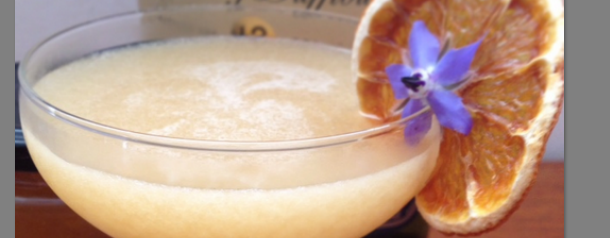
The other week I was lucky enough to be invited along to a whisky and dim sum matching event at the Opium Bar, London with the innovative mixologist Ryan Chetiyawardana. It was so enjoyable and got me enthused all over again for possibly my favourite tipple of them all…whisky.
Whisky is a huge topic- like most alcohols in fact- there is enormous variation and a story behind every label. I think my heart belongs to Scotch and Japanese whiskies and I also love Bourbon, but that is another story.
I have never visited any of the distilleries in Scotland, but a very close family friend is moving up to Scotland to a beautiful area close to Islay and Jura, so I am hoping that it won’t be too long until I get the opportunity. I have been to the Hakushu distillery (http://www.suntory.com/factory/hakushu/)
in Japan and it was amazing- a truly beautiful setting- home to a beautiful bird sanctuary and nature reserve. In Japan they have followed the scotch method of producing whisky and added their own personality- the style of still shape through to the differing climate the whisky is matured in, as well as unique strain of oak cask, Mizunara are only used in Japan.
The last decade has seen a huge surge in interest in Japanese whisky not just in the UK but all over the world.
I remember when I was working in the Bar Detroit in London more than 10 years ago, three British whisky importers came to have a drink and they declared Japanese whisky would be a big thing in 10 years time. Everyone at the bar laughed and I was left feeling slightly awkward about it.
If you have never tried Japanese whisky and are wondering what is all about, try Yamazaki 12 years old. This is the benchmark of Japanese whisky.
Anyway, I am returning to Japan next month for a holiday and I plan to make a trip to the Yamazaki distillery (http://www.suntory.com/factory/yamazaki/). I shall be blogging about all things drinks related from my trip, but keep an eye out for the distillery if you are interested.
So, back in the cocktail groove, I am using a delicious whisky marmalade brought back from Scotland by a friend of mine.
25ml Whisky (preferably slightly smoky single malt)
10ml Cointreau
15ml Pedro Ximenez Sherry
15ml Fresh lemon juice
15ml Chilled mineral water
2 teaspoons of whisky marmalade
Shaken and fine strain into chilled martini glass- Delicate bitter sweet flavour with a slight sweetness of the elegant sherry. Kampai!
R
Hyper Japan Cocktail Competition

What an amazingly busy few weeks Kampai has had! Parties and food festivals- and family visiting, children’s parties too… this weekend we were at Hyper Japan at Earls Court. I had the pleasure of demonstrating up on the main stage in a competition for sake-based cocktails.
Sake sales are increasing in this country, but sake cocktails are yet to take off in terms of popularity. I love sake- of course, it is a nostalgic taste for me, but I also love the craftsmanship behind the product (as I love with all great alcohols). Sake is a drink made from fermented rice and the alcohol content is usually between 15 and 17%. There are considered to be 5 main types of sake, which I will talk about in another blog post, I have found in the UK most people imagine that there is simply warm and cold sake. A very good friend of mine who lives near the ancient city of Nara produces superb sake.
I went up to Earls Court on Sunday- Hyper Japan is a three-day event for all things that Japanophiles love. To be honest, I usually try to avoid a lot of that kind of thing- I am not interested in manga or anime, but I was bowled over by the quality and breadth of Japanese food and drink.
In front of an audience of 400 people I made a drink that I created using sake, homemade rhubarb syrup, sparkling wine and a dusting of cinnamon. Sake is a delicate taste, so I didn’t want to bury it with strong fruit juices and in my opinion, simplicity epitomises Japanese food and ideals. The rhubarb was a nod to my adopted home of Britain and the cinnamon completed the drink perfectly. I named the drink Nadeshiko Martini- “nadeshiko” means “pink” in old Japanese. It was nerve-wracking: me and audiences (beyond the usual bar-full) and judges do not mix all that well- but I was lucky enough to win, thanks I think mainly to my respect for the subtle sake flavour.
If you have an opportunity to go along to a Japanese restaurant please try some sake and let me know what you think.
R
Photographe by Kaori Ando
The East India Company Cocktail
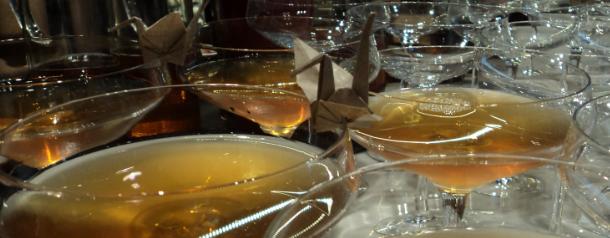
I was chosen to create a cocktail to celebrate 400 years of British- Japanese relations, so I have been working on a sake and tea based cocktail for the prestigious East India Company.
The first British merchant ship, the Clove, arrived in Japan on 12th July 1613. John Saris captained the vessel which was primarily looking for trading options in the area. The Clove made port at Hirado near Nagasaki, the East India Company set up a factory there and Saris etched his signature inside the Great Buddha of Kamakura.
I feel proud to be a small part of a commemoration between the two countries I call home- I have been fortunate enough to have benefitted from the trade- my family enjoys lots of black tea and curries which are a legacy of British-Japanese relations.
I wanted to convey an impression of each party- Britain, Japan and the distinguished East India Company while balancing the flavours in this cocktail. I chose the tea from a variety given to me by the East India Company- their Earl Grey, which is a classic British choice. But this Earl Grey has the most amazing perfume- orange pekoe leaves scented with bergamot and neroli. In keeping with the high-end feeling of the East India Company, I knew that the drink ought to be served in a martini glass with minimal fuss. I added a touch of another British classic, Stone’s ginger wine to give the drink a bit of spiciness along with the sweetness of amaretto and a hint of grapefruit – these flavours have complemented the rich fruity flavour and fresh dryness of “Urakasumi” sake.
I called the drink “Anjin’s Golden Tea” after Miura Anjin whose original name was William Adams, who is believed to have been the first Englishman ever to reach the land of Japan and is the only officially-recognised Western Samurai.
The exclusive event was held at the East India Company’s tea shop just off the Regent Street in Oxford Circus with 100+ guests. It was such an exciting evening. I highly recommend a visit to the East India shop- for curiosity alone and particularly if you are looking an elegant gift.
R
Win a Cocktail Making Classs for Your Business
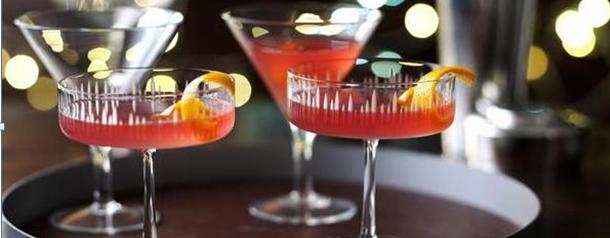
Before I write anything else, apology first. I have not updated this blog since Valentine’s Day!
There have been so many things happening in Kampai over the last few months- very busy, but exciting times.
Since I started this small venture, I have learned a lot, gained a lot of experience and knowledge and discovered so many things- not just about business or cocktails. One of the things I have found is that there are an incredible number of people trying to start or run their own business and a lot of people are helping each other- sharing information, introducing people to each other, recommending different things to each other etc. I have found it to be very friendly journey and I can see that however driven and ambitious people are they are so often generous and giving of their times and ideas. Everyone wants success and there are so many aspects involved in the journey.
I was very lucky to win the local business award called “local business accelerators “ a few months back and now I would like to give away something I can do. Kampai Cocktails and Sussex Newspapers have teamed up to offer one lucky business the chance to win a cocktail making class up to 20 employees.
I cannot help them with their accounting or advertising but I can offer something different to a team of a small business to have a bit of fun. The prize includes a welcome sparkling cocktail & you will learn tips and manners at a cocktail bar. Then the chosen business team will watch a demonstration of how to make cocktails after which they can create their own and of course drink them!
For your chance to win a cocktail making class for your business, simply tell us why your business deserves to win and email your reply to ryu@kampaicocktails.co.uk or kampaicocktails@pmwcom.co.uk.
Closing date for entries is Friday 31st May 2013.
R
Valentine's Day Cocktail Recipes
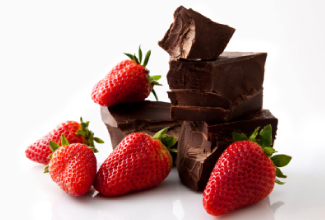
Valentine’s Cocktail
Valentine’s day- This is the perfect opportunity to have a great cocktail, especially when Christmas and New Year have gone so quickly. I would like to introduce you to some fantastic Valentine cocktail recipes – not complicated, but cocktails you can make at home that are romantic and a little bit special to make your loved ones smile.
When I think about Valentine’s day, the first thing I think about is chocolate, this is probably because in Japan, Valentine’s day is the day women give chocolate to confess their love to a man in school or work (always women to men, not the other way around)!
With this bitter chocolate memory in mind, here is an elegant chocolate Valentine cocktail. Unfortunately there are not many chocolate or cacao liqueurs available in the supermarket but you should be able to find one in a liqueur or wine shop.
Valentine Cocktail - Chocolate & Strawberry Martini
25ml Vodka
25ml White cacao liqueur
20ml Dry Martini
10ml Tawny Port
2 x Fresh Strawberry
A half table spoon of caster sugar
Method: Muddle strawberries and sugar together and pour rest of ingredients. Shake with cubed ice and strain into chilled glass.
Glass: Martini
Note: Chocolate and strawberry is an eternally perfect pair! Recommended as an after dinner drink.
Another valentine cocktail I would recommend is a great aperitif sparkling cocktail to start a special romantic evening. This is a perfectly balanced drink of sweetness and bitterness.
Valentine Cocktail - Bitter Sweet Symphony
15ml Campari
10ml Cointreau
100ml Prosecco/Cava
1 cube of white sugar cube
A dash of orange bitters
A small piece of orange peel
Glass: Champagne/flute glass
Method: Put a dash of orange bitters on the white sugar cube and place it at the bottom of the champagne glass. Pour the rest of the ingredients over the sugar cube and gently stir. Squeeze out the zest of orange on to the top of the drink.
Note: This cocktail was created by George Philips in 2011 who now makes cocktails on cruise ships for people from all over the world.
Enjoy your Valentine’s Day. Kampai!
R
Winter Cocktail Specialty
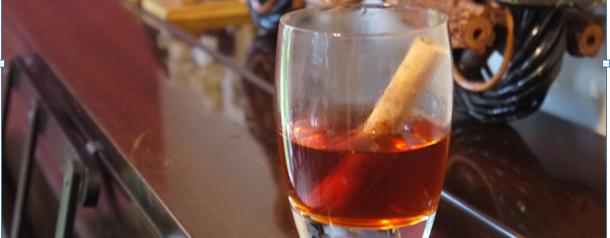
Cocktail of the Month – December
It is in the middle of winter and it is getting colder day by day. In the winter season one of the most popular warm drinks is mulled wine. When you walk into warm pubs, you can smell the cinnamon, cloves and oranges from this tasty mulled wine. To me the smell of mulled wine is the smell of the English winter. Everyone has their own recipe and makes it slightly different and it is quite fun to compare tastes between pubs. However, sadly I often come across over cooked and over infused mulled wines. I also find that the wines are left too long on the heat, lacking the beautiful freshness.
We still need something to warm us up and I have created a drink to beat the cold and bitterness of the English winter. In comparison to traditional mulled wine this is easier to make, has a simpler taste but is elegant and tasteful at the same time. Kampai!
Lapland Tea
25ml Whisky (blended whisky, such as Bells, Famous Grouse)
100ml Earl Grey Tea (Hot)
20ml Red Wine
A table spoon of Sugar (your preference)
Cinnamon Stick
Orange Zest
Method: Pour first 4 ingredients in to the glass or mug. Garnish with a cinnamon stick and squeeze orange skin to over the drink.
N.B: Orange zest is an essential part of this drink; without it this drink is not half as good. You can use smoky single malt whisky or brandy in the place of whisky!
R
Autumn Cocktail Speciality
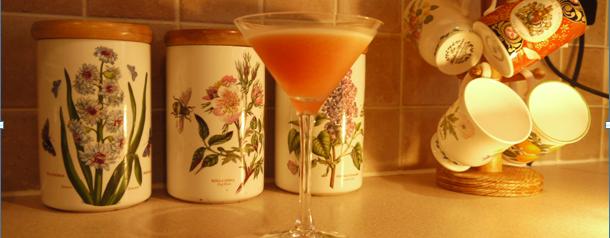
I like autumn. I like a sense of sadness, a sense of an end to things – leaves are falling from the trees and the dark evenings are drawing in. There are also many events going on this season – Halloween, Guy Forks Night and the excited feeling of Christmas approaching at the same time. There are many reasons to have a beautiful cocktail this season!
I have tried to make “holloweeny” cocktails using pumpkins on a number of occasions but have yet to come up with a good recipe. Pumpkin itself does not have much flavour and the liquid is quite thick so it always ends up like a soup rather than a drink. But I recently found pumpkin jam – so I am going to try and make a cocktail using this. If you have any suggestions please let me know!
There is another reason why I like autumn since I came to England: sloe berries. For the last 5 years my family and friends have rambled over the South Downs in West Sussex in autumn to collect sloes to make sloe gin and sloe vodka. I had never heard of sloes in Japan but I think they are an exciting and traditional British speciality.
For this autumn I have created a new sloe gin based cocktail and this one you can make at home.
25ml Sloe Gin
15ml Gin
20ml Fresh lemon juice
2 teaspoons of Apricot Jam
1 egg white
Method:
1. Put all ingredients in to a shaker;
2. Dry shake first (without ice) – this helps the egg white foam and give the drink a beautiful texture;
3. Now shake with cubed ice; and
4. Strain into a chilled glass.
NB: If you do not have a shaker at home, you can use a jam jar with the lid. The jam jar works just as well as a shaker. Make sure you are using good quality fresh egg whites and close the lid properly too!
R
A fantastic discovery of new flavours in Traditional British Ales
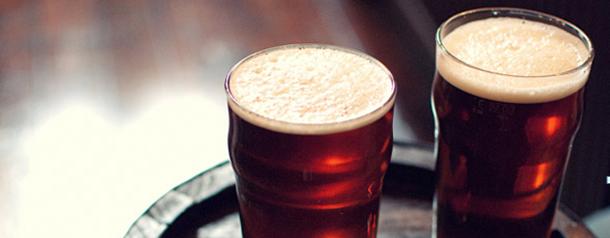
One of the distinctive alcohol cultures in Britain is ales. Although commercial lager is a lot more popular nowadays, ales are still popular among real beer fans.
When I came to England more than 10 years ago, and tasted “real ales” for the first time, I did not like them at all- warm, flat and bitter. I could not understand why on earth people enjoyed this sort of drink.
But gradually my perception has started to change as I have visited more pubs and slowly started educating my palate to appreciate these beers. I soon discovered that ales have got a lot more aromas and flavours. There are so many ales and every one of them has got its own personality.
Last month I had the opportunity to make a trip to Wiltshire, staying with friends and we visited a brewery called Keystone Brewery http://www.keystonebrewery.co.uk/. I learned a bit more about ales.
Real ale is a beer brewed from malted barley, hops, water and yeast matured by secondary fermentation in the cask (this is called “cask conditioned”). Real ale is not pasteurised after it has been created. As fermentation continues, carbon dioxide is produced dissolving into the beer, no extra carbon dioxide is added- rather like champagne. For the stamp of a true real ale, it should be hand-pumped when it is served.
Lager undergoes the same primary fermentation as real ale but after that stage it is filtered and/or pasteurised. No further conditioning can therefore take place (brewery conditioned).
I have visited a number of pubs in Sussex this summer and these are the 3 best beers I would recommend.
1. Dark Star – Hophead 3.8% abv. A clean and refreshing blond ale from Horsham in West Sussex. Lovely floral aroma with a light elderflower taste and a hint of citrus bitterness.
2. Southdowns – Devils Dyke Porter 5% abv. A dark soft porter from West Sussex. Chocolate, toffee and smoky flavours. Maybe suited more for winter time.
3. Kissingate – Black Cherry Mild 4.2% abv. A mild ale from Horsham in West Sussex. A full flavoured beer with floral and black cherry aromas. A ripe black cherry, lightly roasted malt and bitter chocolate taste. Nicely balanced and very flavoursome!
I appreciate the localness of the product and how each brewery produces something unique from local ingredients they find in their proximity. I must admit, I still drink more lagers than ales, but I am gradually discovering the joy of ales, especially in a pub garden on an English summer’s day and I am becoming more British by the day.
R
Imbibe Live 2012 - Education for mixologists

Every year, possibly the UK’s biggest and best bar show Imbibe www.imbibe.com/live is held in London, where more than 1000 brands are on display, introducing new spirits, wines, beers, purees and cocktail equipment to drinks professionals. This week I went along again to Olympia to meet up with friends and acquaintances in the industry and get all excited about the new directions opening up in the world of drinks.
I love this bar show firstly because I enjoy the opportunity to see and taste new products. I feel inspired to challenge myself and create something new. I tasted some natural fruit syrups called Blossoms Syrup www.blossomssyrup.co.uk. Their fruit syrups do not contain any preservatives or additives so the flavour of natural fruit is still fresh and vivid in the mouth. Another product that impressed me was a Vodka called Vestal www.vestalvodka.com . There are so many vodkas around nowadays and I do not deny that most vodka has its own characteristics and personality but I have not met such a surprising vodka for a while, made from potatoe with clean yet earthy and spicy aromas. I am going to get hold of this vodka and make a great drink soon!
The second reason I love the Imbibe Bar Show is that I bump into old friends in the industry – mixlogists, reps and suppliers – we chat about old times and end up talking happily about drinks. These friends also introduce me to new people. Through my good friend, the excellent bar consultant, Kenji Jesse, I got to meet the head bartender of the top New York restaurant Locanda Verde and more importantly a talented food and drink writer, Naren Young whose writings at Fork and Shaker www.forkandshaker.com are a great introduction to both novice and professional bartenders.
After the bar show, I went for a quick drink at a bar in Charlotte Street. I shan’t mention the name of the bar, because the cocktail I ordered was made rather carelessly. However, the famous English chef, Heston Blumenthal was standing, minding his own business and having a drink. I didn’t want to disturb him, but I couldn’t resist popping over and saying hello. He was a very amiable gentleman – I hope to get to try his food or even better, for him to try some of my drinks one day!
R
Summer Cocktails Continued – Elderflower Recipes

After a great weekend of making Jubilee cocktails, I am keen to get back to summer cocktails again! Last week I was wandering around a local park and found elderflowers blooming towards the warm sun – I hope we catch a glimpse of the sun again soon.
The elder tree produces both elderberries and elderflowers – both useful in cocktail making for their delicious flavours and also thought to have various health benefits. Elderberries are well known for very high anti-oxidant levels, flavonoids, amino acids, carotenoids, tannins and vitamins and elderflowers are used in detox to strengthen the immune system and relieve the symptom of hay fever and sinusitis and are also good for relaxation.
There are quite few cocktails using elderflower cordial or elderflower liqueur:
Twinkle
This cocktail is very clean, floral and elegant, easy to make and simple. Lemon zest adds freshness –Created by Tony Conigliaro in 2002.
25ml Vodka
25ml Elderflower Cordial
25ml Prosecco
Garnish: Lemon Zest
Glass: Martini
Method: Stir all ingredients and pour into chilled glass
Black and Blue
A gorgeous twist on a Gin and Tonic: Black and blue berries marry beautifully well with the sweet and floral bouquet of elderflower and the bitterness of tonic water – Created by Andrew Harrod in 2010.
30ml Gin
15ml St Germain Elderflower Liqueur
20ml Freshly Squeezed Lemon Juice
3 x Blackberry
3 x Blueberry
1 x table spoon of caster sugar
Top up with Tonic water
Garnish: Blueberry, Blackberry and Lemon peel
Glass: Hi-ball
Method: Muddle berries and sugar in Boston glass. Add gin, St Germain and Lemon Juice and shake with cubed ice. Strain into glass over cubed ice and top up with Tonic Water
Elderflower Bloom
This is an elegant aperitif drink with a kiss of elderflower – Created by myself in 2011.
50ml Sake
15ml Elderflower Liqueur
5ml Chambord
Top up with Prosecco
Glass: Champagne
Method: Shake first 3 ingredients with cubed ice and top up with prosecco.
Home-made elderflower cordial recipe
Making elderflower cordial is not difficult. This is the recipe I’ve used with great success.
Ingredients
- 30 elderflower heads
- 1.7litres/3 pints boiling water
- 1kg caster sugar
- 50g citric acid (available from chemists)
- 3 unwaxed lemons,
Method
1. It is best to pick elderflowers in a dry warm day, when the blossoms are newly open, well away from traffic. Gently rinse over the elderflowers to remove any dirt or little insects. Pour the boiling water over the sugar in a large saucepan. Stir well and leave to cool.
2. Add the citric acid and finely grated lemon skin.
3. Slice lemons and add to the sugar water, and then finally add the flowers.
4. Cover it with a clean cloth and leave in a cool place for 48 hours, stirring occasionally.
5. Strain through some muslin and transfer to sterilised bottles.
This year I also plan to make elderflower champagne for the first time. I shall let you know how it goes…
R